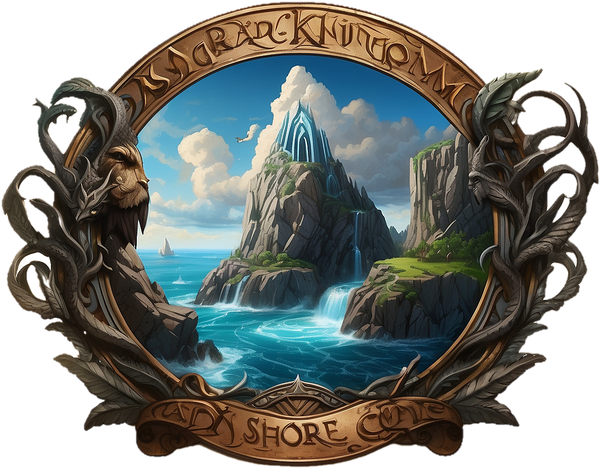There are moments when nothing makes sense. You try. You push. You bleed. But nothing gives way. No answers come. And the silence feels like a void. But maybe this isn’t the end. Maybe this is the forge.
In Norse mythology, greatness was never handed out. Odin gave his eye to gain wisdom. Týr gave his hand to bind the monstrous wolf Fenrir. Thor faced death, knowing the cost. Even the gods were shaped through pain, uncertainty, and loss. That wasn’t weakness; it was how strength was born.
The Forge Is Where Steel Learns Its Shape
In the old world, a blacksmith didn’t ask steel if it felt ready. They put it in the fire. They struck it again and again. They folded it, over and over, until the steel held not just a form, but a purpose. That’s the process you’re in now.
The heat? That’s your delay. The hammer? That’s every setback you’ve faced. The folding? That’s you rising—again, and again, and again. You’re being forged.
The Vikings understood this process intimately. Their very survival depended on a mastery of the forge. Their longship nails, their axes, their swords—each was a product of fire and immense pressure. The iron ore from the earth was brittle and useless until it was purified by the flames of the forge. The smith would hammer the impurities out, fold the metal to add strength, and temper it in water to harden it against breaking. The most powerful weapons were not flawless at first; they were the ones that had been through the most work, building a true Viking resilience.
Even Divine Weapons Had to Earn Their Worth
In the myths, legendary tools weren’t simply made. They were forged, crafted in pressure, fire, and mastery. They were not symbols of ease—they were proof that great things take strain to become great.
Take Mjölnir, Thor's hammer. It was forged by the dwarves Brokkr and Sindri. During its creation, the dwarf was stung by a fly, and for a moment, the rhythm of the hammer blows was broken. That one-second flaw in concentration left the hammer's handle short. Mjölnir was not perfect. Its flaw made it unique. It was a divine weapon with a human story—one of immense power born from an imperfect, difficult process.
Likewise, Odin's spear, Gungnir, was said to have been made by the same dwarves and was so balanced that it would always hit its mark, no matter the obstacle. It was a symbol of destiny and unerring purpose. But it wasn’t simply handed to Odin—it was a treasure he sought and earned, a tool for a purpose he had to forge for himself.
These myths remind us that even what the gods carry had to endure the forge. You are not simply enduring for no reason; these are the lessons from Norse gods on forging strength in Norse mythology. You are becoming a weapon worthy of your own story.
Stillness Doesn’t Mean You’re Off Course
Sometimes, the world feels quiet. No signals. No signs. But just because the sky is cloudy doesn’t mean the stars are gone. Purpose doesn’t disappear. It gets buried under fear, fatigue, or frustration. But it never vanishes.
In Norse thought, silence wasn’t weakness. It was space. It was the vast, empty expanse of the open ocean. The Viking seafarer, navigating without a compass, would sail into that endless blue. They would have to feel the ocean currents, read the subtle signs in the waves, and listen to the call of the wind. They knew that stillness was a test of faith in their own purpose. It was a time to trust that the destination was still out there, even if they couldn't see the path.
You may not feel strong right now. You may feel like you’re simply drifting. But you’re not failing. You’re in the part of the journey where the steel holds still, right before it’s shaped again. This stillness is a key Norse endurance lesson—a time for listening, for remembering, and for choosing your next move with clarity.
Symbols Weren’t Decoration. They Were Anchors.
The Vikings didn’t wear runes, knots, and sacred shapes to look intimidating. They wore them to remember. They were reminders of the values they stood for, anchors for their minds when things got hard. For example, the Vegvisir, or “wayfinder,” was a stave used to help a person find their way through rough weather. It was a spiritual compass. The Aegishjálmur, or “Helm of Awe,” was used for protection and to inspire fear in an enemy, but it also served as a symbol of courage for the one who bore it.
These weren’t just symbols of magic; they were tools of memory, carried on their person, in their art, and on their ships. They were reminders of a deeper purpose—a code that bound them together. These are the Viking symbols of endurance.
Today, you carry your own symbols. They might not be carved into stone or hung from your neck. But they live in your actions. In your endurance. In the choice to stand one more time. That’s exactly what you need right now. A way to remember—this fire won’t burn you. It’s going to forge you.
Final Thought
You are not broken. You are not lost. You are not behind. You are being tempered.
This isn’t the end of the road. It’s the moment the blade starts to take shape. So don’t flinch at the fire. Don’t fear the hammer. And don’t run from the silence. Because all of it, every ounce, is building something stronger than you were before.
You are not lost — you are being forged into the weapon your story needs.
